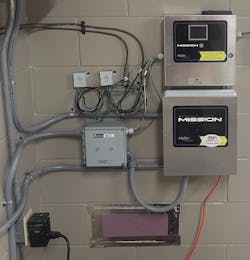Complicated vs. Intuitive: SCADA Systems
About the author:
Dara Drawdy is technical communications coordinator for Mission Communications. Drawdy can be reached at [email protected].
Jack Wells has been the manager for RiverSouth Rural Water District for the last seven years.
He was tasked with maintaining all facets of the RiverSouth operations. Unfortunately, the telemetry system in place when Wells came on board was proprietary and proved difficult for RiverSouth employees to run, even after weeks of training. When the integrator of that custom telemetry system passed away suddenly, RiverSouth was unable to properly operate the system and was in need of a new supervisory control and data acquisition (SCADA) system.
“It was too time-consuming to figure out the old system and almost impossible to train new employees to use it.” Wells went in search of a more functional system that would not require weeks of intensive training to maintain. “We wanted something user-friendly and that you didn’t have to be a programmer to use.”
Researching SCADA Systems
Wells met Joshua Christiansen, Arkansas Branch Manager with Betrem Products, at a trade show in Hot Springs, Arkansas.
“Josh went over the Mission system basics. A few days after the show, he came to us and showed us the Mission system and how it could replace our old system,” Wells said.
This demonstration provided an overview of how remote terminal units (RTUs) can monitor many aspects of the RiverSouth system.
RiverSouth serves approximately 4,000 customers and manages distribution of water to more than 1,700 taps over 200 square miles in the Ozark, Arkansas area. Wells currently uses nine RTUs and plans to incorporate additional units over the next year.
“[Josh told us] we could add one RTU at a time without affecting our old system,” Wells said. “It’s expensive to have to replace a whole system. When you can do it in increments, it helps a lot.”
RiverSouth utilizes RTUs at pump stations, standpipe tank sites, control valves and master meter locations. Among those units are several MyDro 850 RTUs, some that monitor tank levels as part of the Mission tank and well system. Real-time alarms notify operators of current tank, well and pump states. This automated remote-control system maintains water level in storage tanks by utilizing transducers in the tank to determine water levels and can automatically dispatch a command to remote wells or booster pumps to turn on or off.
Wells uses the 123SCADA web portal and mobile app to review information gathered from the RTUs, as well.
“One great benefit is the amount of data we can collect and use,” Wells said. “We use [Mission RTUs] to keep up with water levels in the tanks and the pressure and suction of the pumps. We can also see generator run times. Water forms patterns. As soon as that pattern changes, you know something is up.”
The reporting system shows Wells inconsistencies as soon as they arise. He said this has improved his job and minimized his time in the field.
“I’m not out on the road so much. I use the daily report the most to check for any changes in run times and flows that will alert me of possible leaks,” he said. “In the water industry, you’re always running behind since it can take time to discover problems and to fix them. Mission shortens that time by alerting us when there’s a possible problem.”
In addition to real-time notifications, Mission provides 24-hour technical support.
“When you call tech support and start talking about tank and well or run times or pump pressure, they know exactly what you’re talking about immediately and can help out a lot,” Wells said. “The products have been performing great. We had one transducer go out, and I had one on the shelf. The service rep walked us through replacing it over the phone.”
Along with no software to install, Mission offers weekly webinars and tutorial videos for additional training. This continuing education was the deciding factor for Wells in choosing the equipment and platform.
“There are a lot of good products to choose from, but I’m looking for good service, too,” Wells said. “The Mission system gave us that.”

